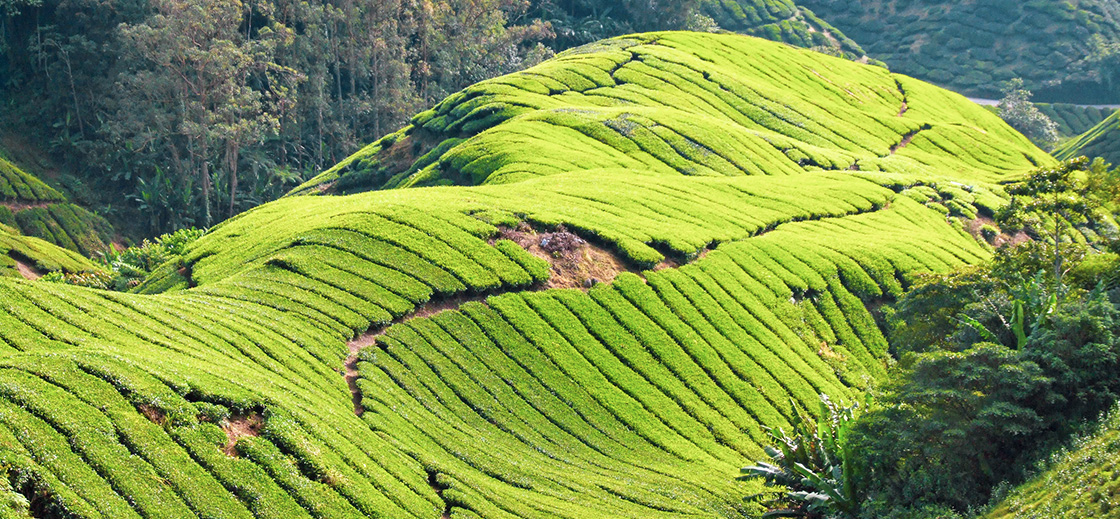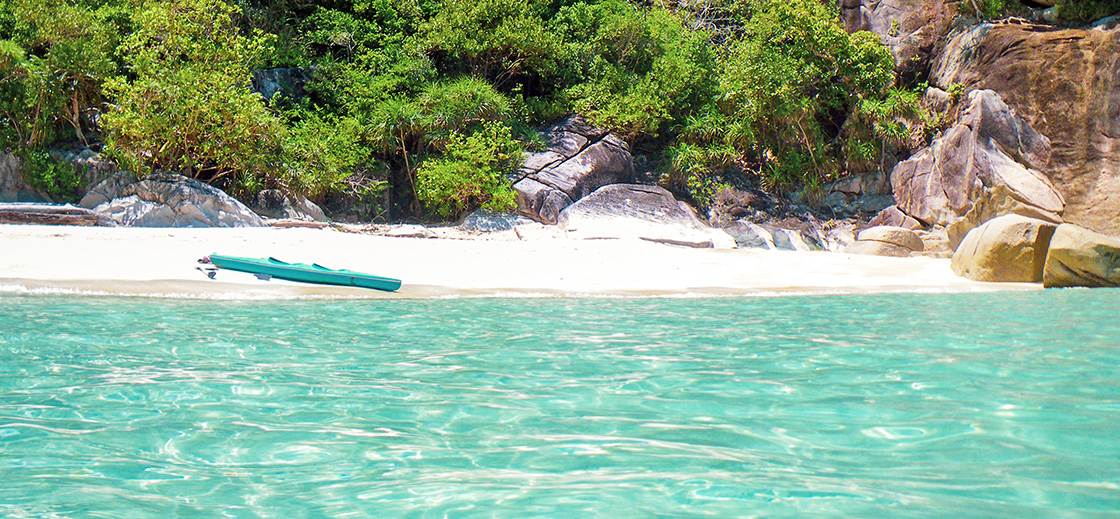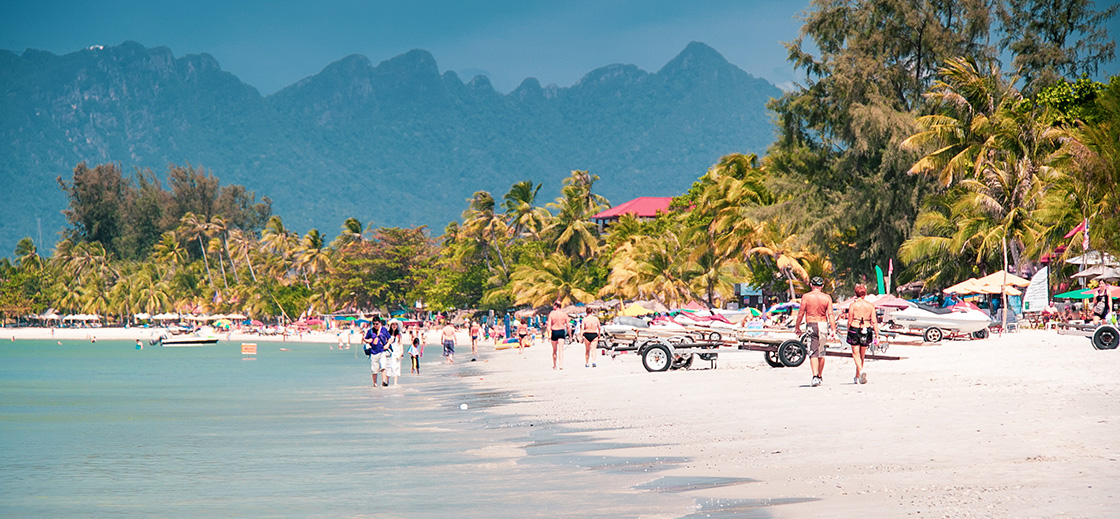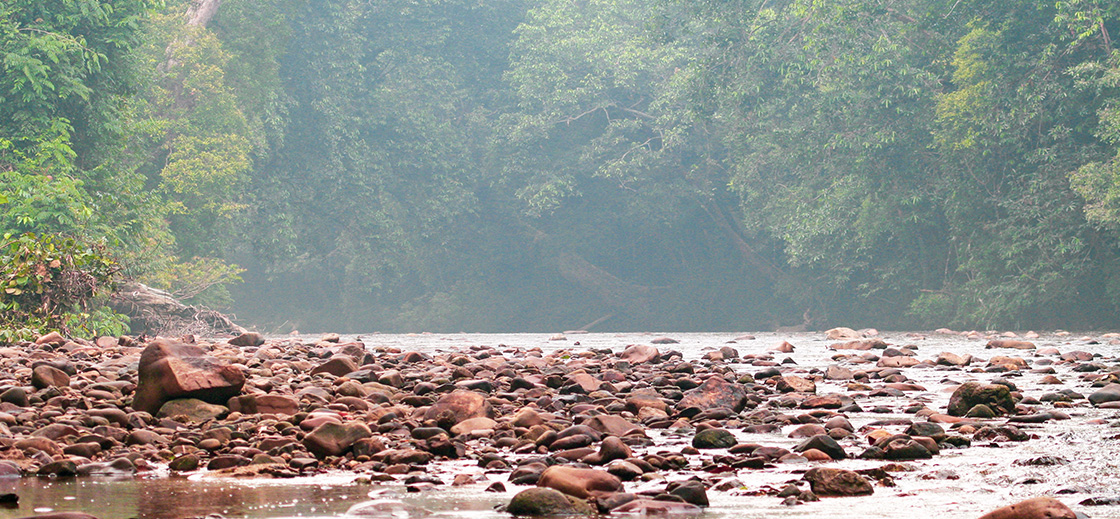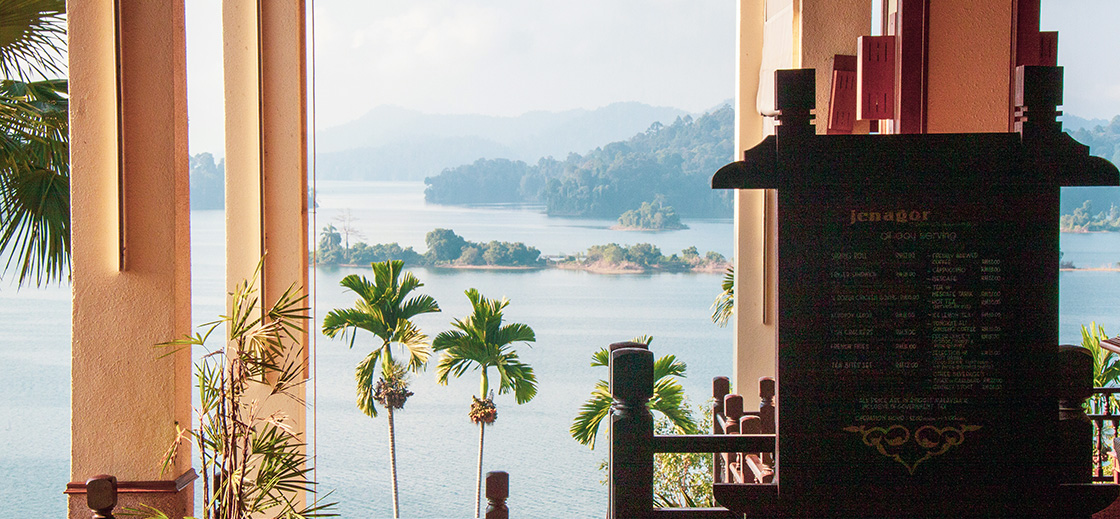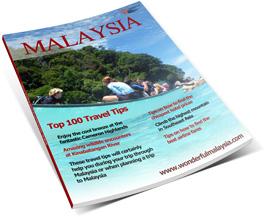Gunung Mulu National Park
Gunung Mulu National Park (Mulu NP) may very well be the most beautiful park in Borneo, as well as being the biggest park of Sarawak. The park is particularly known for the enormous caves and pinnacles (limestone rocks). A nice activity is the headhunters' trail; where you stroll along several authentic villages on narrow paths and visit places of the original decapitators. Within Mulu National Park lies the biggest underground cave chamber of the world; Sarawak Chamber (part of Good Luck Cave). According to the BBC's Planet Earth series 40 Boeing 747 aircraft's fit in it. Also within the Mulu Park you find the longest cave of Southeast Asia, the Clearwater Cave with a documented length of well over 75 kilometers. In 2000, Mulu NP was listed as a World Heritage Site by UNESCO. The Ministry of Tourism in Malaysia is now trying to get Mulu NP listed as Global Geopark (just like Langkawi). All activities and treks start at Mulu National Park Headquarters; some are not permitted without a licensed park guide. Costs of the guide are added to the total costs of the activity or trek. Often activities or treks start with a small long boat ride along the Melinau River.
"Vertical cliffs and incredibly steep slopes reach summit ridges before dropping abruptly down to deep gorges and hidden valleys. Jagged limestone pinnacles, bleached white, spear out of the lush green canopy. Cave passages twist and wind their way through the mountains, opening into chambers so large they defy description and dwarf you into insignificance."
On this page:
- Exploring the caves
- Experience the bat exodus
- Limestone Pinnacles at Mt. Api
- Trails and other attractions
- Tours and prices
- Best time to visit Mulu NP
- Checklist
- How to get to Mulu NP
- Other things to do
Exploring Mulu's underground world
The main reason why tourists visit Mulu NP is because of its amazing underground attractions as the park possesses some of the most spectacular caves in the world. International caving expeditions have mapped over 300km of cave passages since 1977. There are numerous caves within Mulu NP, but only a few are accessible by visitors (so called 'show caves'). The most visited of these caves is the enormous Gua Payau or Deer Cave; as it is easily accessible from the entrance of the park (Park Headquarters). Especially the Garden of Eden inside the cave is a sight to behold. There is another reason why it is the most popular cave; every evening millions of bats fly out of the cave looking for food at night.
Another very popular cave is the Langs Cave. With its low ceilings it is the perfect place to take close-up pictures of sleeping bats. Cave of the Winds has many beautiful stalagmites and stalactites, a fantastic waved ceiling and is known for the nice breeze that runs through the cave system. Within close proximity of the Cave of the Winds yet another wonderful cave is found; Clearwater Cave where an underground river of over 108km runs through. The latest addition to the show caves is the Fast Lane Cave; where visitors walk a 1,5km long path through the cave system. Because of the stunning lighting you can really enjoy some of the best formations within Mulu NP.
Real caving enthusiasts can go adventure caving at the following caves; Turtle Cave (an extension of Clearwater Cave), Racer Cave, Lagangs Cave, Clearwater/Wind Cave Connection and of course the biggest cave of all; Sarawak Chamber. All these caves are for intermediate or advanced cavers only and proof of previous caving experience needs to be provided. Depending on the type of cave, park management may require additional forms of proof. Besides these caves there are even more caves, but in those caves official cave expeditions are still taking place.
Millions of bats
A spectacular sight to behold are the millions of bats that fly out of the cave every evening (and back into the cave early the next morning). At Mulu National Park there is a special area where visitors can sit down and watch the bats flying in circles in front of the cave entrance. Often you can spot hawks that feast on the bats; they have been waiting all day for their evening dinner. Bat fly out almost daily, roughly between 5pm and 6.30pm. Occasionally during rainy season, they are not flying out at all. Check out the video below to get a good impression of this magnificent sight.
Pinnacles at Mount Api
One of the absolute highlight during your stay at Mulu NP is the 'Pinnacles Trail'; a three day trek through the vast jungles of Sarawak. The pinnacles are actually a series of 45 meters high, limestone spikes that are clearly visible above the surrounding vegetation. They are located on the side of Mount Api (Gunung Api, 1750mtr), one of the three mountains in Mulu Park. The trek is not an easy one. It starts with a normal walk through the vegetation, followed by a light rise with some actual climbing. The last part is the most challenging as there you will have vertical climbs, dangling ropes and metal rung ladders. Most strenuous part of the climb is probably the way down. Sometimes the Pinnacles climb is cancelled due to bad weather, but luckily this happens no more than 10 days per year. Below a nice video impression of the trek to the Pinnacles at Mt. Api.
Trails and other attractions
Besides the many beautiful caves Mulu NP also has much to offer above the ground. Visitors can either choose to stay within the main park area or venture out to do some light or heavy jungle trekking. A great activity is a visit to Paku Waterfall which can be done unguided and takes about 2 hours to reach from park HQ. There's also a guided tour to the Canopy Skywalk, with 480 meters the longest tree-based canopy walk in the world. You can also join the night tour, a 2 hour tour in the evening (after dark) to discover animals, insects and plants in the Kerangas forest. Of the more serious jungle treks you can hike to camp 1 (1/2D), or do the more strenuous summit trail to the summit of Mt. Mulu (4D/3N), the pinnacles trail (3D/2N) or the headhunters' trail (3D/2N); also an alternative way of entering or leaving Mulu NP. During the treks you will be accompanied by an official World Heritage Guide. The treks at Mulu NP need to be arranged beforehand (this can be done online at one of the many tour agencies). The treks require a certain level of physical fitness, though it is possible to hire a porter to carry your hiking bag (as you need to bring your own stuff like sleeping mattress, gas cooker and food).
Tours and prices
Several tour packages are offered to Mulu, best to make arrangements beforehand as accommodation is often limited. One-day tours; where you only visit the main park with the most popular caves, or a three or four day trek where you will also hike to the Pinnacles; one of the highlights of a visit to the national park. Prices of tour packages vary between RM40 and over RM500 per person (in case of the multi-day treks). Around Mulu Park there are several accommodation options, from basic to very luxurious. A very nice place to stay is the Royal Mulu Resort just outside Mulu National Park. Upon arrival visitors pay a Sarawak Government National Park Entry Fee, which is RM10 per person for each day that you enter the park. If you are going to do a jungle trek then it is very important to make reservations up front. Most jungle treks take up to three days so during the trip you will stay overnight at one of the basic lodges (part of the trails). As most of these lodges can only accommodate a certain amount of visitors per night it is important to reserve beforehand.
Best time to visit Mulu NP
As Mulu National Park lies deep within the vast jungles of Borneo, it is not affected by monsoon and typhoon seasons. Because of this there actually is no real best time to visit Mulu. Driest months however are between July and September, which makes hiking around the national park more strenuous then during the cooler months. As there is limited accommodation available at the national park it is best to make reservations beforehand. Especially if you plan to visit the park during peak season (July to September) it is necessary to book in advance to avoid disappointment.
Checklist trip to Mulu National Park
- Head lamp (or torch light)
- First aid travel kit
- Tripod for your camera (to make pictures in low light conditions)
- Mosquito repellent
- Walking shoes or hiking shoes
- Poncho (or umbrella)
- Mosquito netting (if you're going for the trails)
- Zip lock bags to keep your spare clothing dry
- Towels (in dry bag)
- Light snacks
- Water bottle
- Plastic bags to put over your shoes when you are walking through guano (bat poo)
- Personal medicine
- Toilet paper or wet tissues
* There are additional items to bring along for people that are going to do a trek like gas cooker, sleeping bag and more (do check with your tour operator beforehand).
How to get to Mulu National Park
Most of the times tourists use Miri as the starting point for their trip to Mulu National Park as there are daily flights from Kuala Lumpur to this small city in Sarawak. They often stay in Miri for one night before their trip to Mulu. MASWings operates two daily flights from Miri to Mulu. Flights from Miri to Mulu take about 30 minutes. Mulu can also be reached by boat or overland by 4x4 over rough timber tracks, both of which will approximately take 8-10 hours to reach the National Park. This option is only relevant for real adventurous travelers as there is no actual road access or highway between Miri and Mulu (so no normal cars, busses or taxis!). It is also possible to fly directly from Kota Kinabalu or Kuching to Mulu National Park.
Below a list with some hotels in and directly around Miri.
- Miri Marriott Resort & Spa *****
- ParkCity Everly Hotel Miri ****
- Borneo Rainforest Resort ***
- Eastwood Valley Hotel ***
Things to do on Sarawak
Things to do on Sabah
- Danum Valley
- Kinabatangan River
- Kota Kinabalu
- Langkayan
- Layang Layang
- Mount Kinabalu
- Rafting
- Sandakan
- Sepilok
- Sipadan
- Gomantong Caves
- Turtle Island
